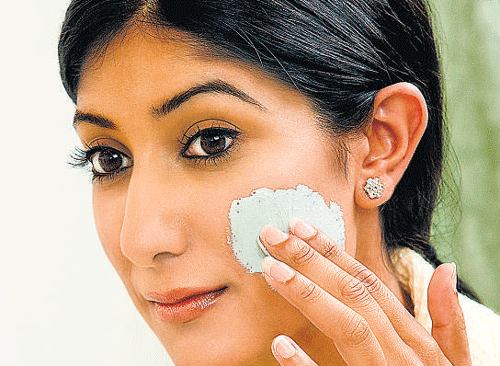
Market surveys reveal that over 50 per cent Indian women use skin lightening creams and other cosmetic products. But do they really work? Hema Vijay looks for answers.
Fairness is an unfair obsession in India, largely fuelled by deeply entrenched caste prejudices, stereotyping in films and irresponsible advertising. Market surveys reveal that over 50 per cent Indian women use skin lightening creams and other cosmetic products.
“A large number of women – and men, too – have fallen victim to this craze, never mind their age. Yet,
interestingly, use of fairness creams is especially high in the low-income group simply because affluent women have the option of going in for expensive salon care,” says Vaani Aravind, a social activist.
V Chitra, beautician and proprietor of a well-known chain of beauty salons in Chennai, agrees, “Wherever they may be on the fairness spectrum, a huge chunk of my clients ask for
treatments that will make their skin a shade fairer than the original colour.”
It’s really no surprise then that India's whitening cream market is worth a whopping Rs 2,600 crores (AC Nielsen survey, 2010). Given this current reality, there is an urgent need to take a closer look at the safety, efficacy and quality of fairness products that line the supermarket shelves across the country.
Do they really make a difference? Are they harmful for the skin in the long run? Are consumers paying more just for the brand name or are the tall claims substantiated with some tangible results?
The Consumer Association of India’s sister organisation, Concert Trust recently completed the
comparative testing and analysis of 14 brands of fairness creams for women and men. While all the
products tested fulfilled the existing standards set by the Bureau of Indian Standards (BIS) – and some even fell into the ‘good’ category – there is still cause for concern and the need for judicious use, because regulations in India are not up-to-date with the latest global research findings.
For instance, globally, excessive use of personal care products that contain parabens like methylparaben, butylparaben, propylparaben and isobutylparaben, is not recommended, as prolonged exposure to them is known to have adverse impacts.
Of the 14 branded fairness creams tested, 9 had parabens, although within specified limits. Yet, how can consumers keep track of the total amount of parabens being imbibed from various products and its
cumulative effect on the body?
Many fairness creams available in the market today contain bleaching agents and other harmful ingredients banned in the West. Several contain steroids, which result in skin damage, pigmentation, abnormal hair growth and some may even hasten ageing.
Likewise, long-term use of sub-quality fairness products may lead to the facial skin getting hyper-pigmented – the skin can become thin and areas around the eyes can get increased pigmentation causing a ‘bleach panda effect’, especially in those with sensitive skin. What complicates matters further is that not every manufacturer lists all the ingredients contained in the cream.
“I wonder how many women are aware that light skin is more vulnerable to diseases, and that melanin, which is responsible for dark skin, actually provides it protection from the sun, consequently, keeping it younger,” asks Dr Kamalesh Anand, a dermatologist in Chennai. The depletion of melanin leaves the skin vulnerable to harmful UV radiation from the sun and DNA damage.
Another common misconception is that fairness creams with the ‘herbal’ tag have no harmful chemicals. The truth is that they, too, have chemicals in the form of preservatives and cream bases, although they are relatively safer.
“Like with drugs, conducting clinical trials should be made mandatory for cosmetics, and manufacturers must conduct efficacy and safety tests before a product is launched. Unfortunately, as of now, there are no such rules in place, though leading manufacturers do conduct trials,” informs Dr R. Hemalatha, who led the research for Concert Trust.